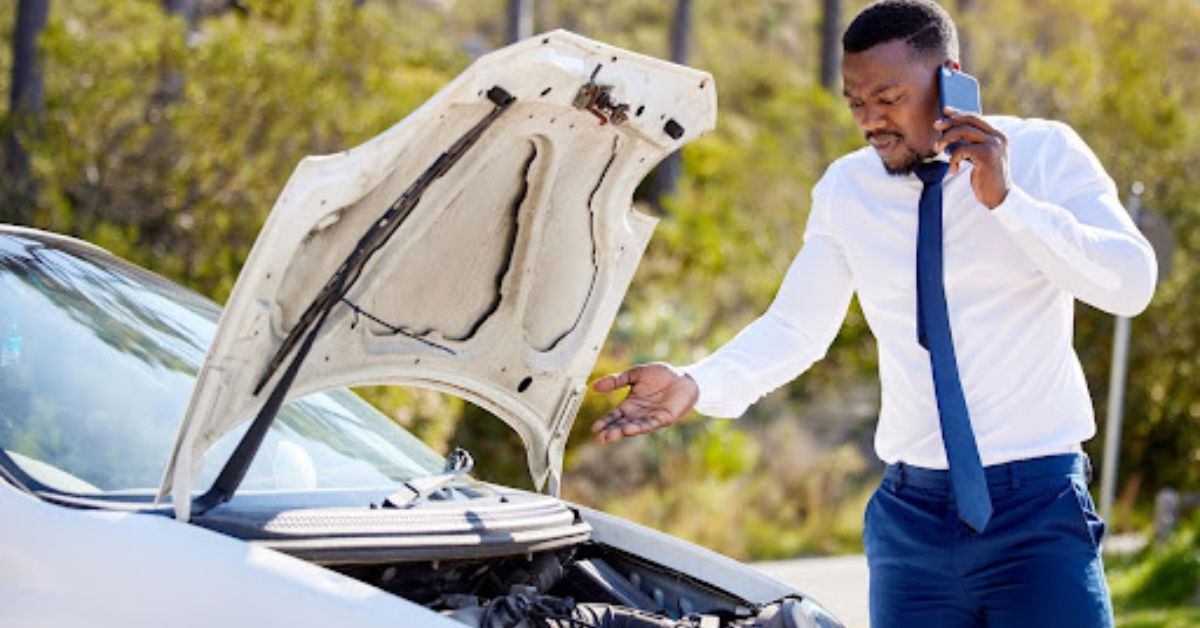Car troubles happen to everyone at some point, but the most common car problems—like flat tires, worn brake pads, dead batteries, and faulty spark plugs—can often be fixed without expensive repairs. Whether it’s a steering issue or a flickering check engine light, understanding what’s going on under the hood helps you act fast and avoid bigger headaches.
Why We All End Up Googling “Weird Car Noise”
You’re cruising along when your car starts making that sound again. You know the one. The thump, squeak, or growl that wasn’t there yesterday. Whether you’re a first-time car owner or a seasoned road warrior, these little surprises are part of the ride.
But here’s the good news: most common car problems aren’t as scary as they seem. With a little know-how, you can avoid unnecessary repairs and keep your vehicle running strong, without draining your wallet.
Before We Dive In: What Counts as a Common Car Problem?
A “common” car problem is one that pops up regularly across all makes and models. These aren’t factory defects or once-in-a-blue-moon issues—they’re the everyday struggles that car owners face due to wear and tear, neglected maintenance, or aging parts.
Whether you’re driving a brand-new vehicle or something you picked up from a local used cars dealer, knowing how to recognize and fix these problems early can prevent engine damage, improve fuel economy, and cut down on those constant battles with frequent repairs.
The Most Common Car Problems and How to Fix Them
Let’s break down the most common car problems, what causes them, and how you can fix them, or know when it’s time to call in help.
- Flat Tire? Here’s the Quick Fix
A flat tire is one of the most common problems drivers face, and it can happen anytime, especially if your tire pressure isn’t regularly checked.
Fix it:
- Pull over to a safe location.
- Use your spare tire and jack to replace the flat.
- Add a tire pressure gauge to your glove box for future checks.
Long-term? Have the tire patched or replaced and keep an eye out for uneven wear, which may signal a suspension or alignment issue.
- Worn Brake Pads: Noisy, Risky, but Repairable
Brake pads don’t last forever. They squeal, grind, or feel soft when they’re ready for retirement. If left too long, they can cause serious damage to the brake fluid system and rotors.
Fix it:
- Look for squealing noises, longer stopping distances, or a soft brake pedal.
- Replace brake pads before they wear down completely—typically every 30,000–70,000 km.
- Use quality parts that match your manufacturer’s recommendations.
- Dead Battery Blues: How to Spot and Solve
That dreaded silence when your car starts… or doesn’t. A dead battery is usually to blame, and it’s one of the top culprits for roadside assistance calls.
Fix it:
- Jump-start your car using a good battery or jumper pack.
- Clean the battery terminals.
- If your battery is more than three years old or keeps dying, replace it.
Pro tip: Batteries fail faster in extreme cold or heat, so keep a tester handy during seasonal changes.
- Spark Plugs Gone Bad: Symptoms and Simple Replacements
Faulty spark plugs can cause misfires, rough idling, poor fuel economy, and even engine damage if ignored. It’s a small part with a big job.
Fix it:
- Listen for engine knocking or hesitation while driving.
- Replace your spark plugs every 40,000–100,000 km, depending on your car.
- Always replace all plugs at once for consistent firing.
Also, check your ignition switch and ignition systems if the issue persists.
- Steering Wheel Problems: Power Steering or Locked Up?
If your steering wheel is stiff or unresponsive, it could point to a power steering pump issue or a locked steering wheel.
Fix it:
- Check the power steering fluid level.
- Look for leaks in the steering system.
- If your steering wheel locks while parked, try turning the key while gently rocking the wheel.
A full replacement of the power steering system might be needed if fluid top-ups don’t help.
- Transmission Fluid Troubles and What They Mean
Transmission problems are often caused by low or old transmission fluid. You might notice delayed gear shifts or slipping while driving.
Fix it:
- Check the fluid level and colour—healthy fluid is pinkish-red.
- Replace dirty or low fluid as per your car’s owner’s manual.
- If problems persist, get your transmission system inspected before it fails completely.
- Cooling System Issues and Engine Overheating
Engine overheating often points to a leak or blockage in the cooling system. This can affect the water pump, radiator, or coolant flow.
Fix it:
- Watch your temperature gauge and never drive with an overheated car engine.
- Top up your coolant, but only once the engine has cooled.
- Check for signs of a malfunctioning thermostat or radiator cap issues.
Neglecting this can lead to massive engine damage that’s anything but a quick fix.
- Check Engine Light: What’s It Really Telling You?
The check engine light can signal a range of issues—some minor, some urgent. It might be a loose gas cap or something more serious, like a faulty engine control unit or emissions trouble.
Fix it:
- Use an OBD-II scanner to read the code.
- Address common culprits, such as fouled spark plugs, faulty oxygen sensors, or a clogged catalytic converter.
- For recurring lights, consult a mechanic, especially if your vehicle is running rough or losing power.
What’s Next? Keeping Car Problems From Coming Back
You don’t need to be a mechanic to stay ahead of common car problems. What you do need is a maintenance mindset. Here’s how to keep your vehicle happy:
Regular Maintenance Checklist:
- Check oil level and change oil and oil filter on schedule.
- Inspect and replace air filters and fuel filters.
- Monitor tire pressure, rotate tires, and align wheels.
- Test and charge your electrical system before long trips.
- Flush and refill fluids: brake fluid, transmission fluid, coolant, and more.
- Address small leaks, noises, or warning lights early.
Following a basic maintenance routine, like inspecting your brakes, tires, and fluid levels, can go a long way in preventing costly repairs. The National Highway Traffic Safety Administration offers a helpful checklist to keep your car in top shape year-round.
Final Thoughts: Be Your Car’s Best Ally
Knowing how to handle the most common car problems puts you in the driver’s seat—literally and figuratively. A small fix today can prevent a bigger issue tomorrow. Whether it’s spark plugs, a flat tire, or weird vibrations from your steering wheel, staying alert and informed makes all the difference.
So next time something feels off, don’t panic. Pull out this guide, check your symptoms, and take action. Your vehicle (and your wallet) will thank you.







